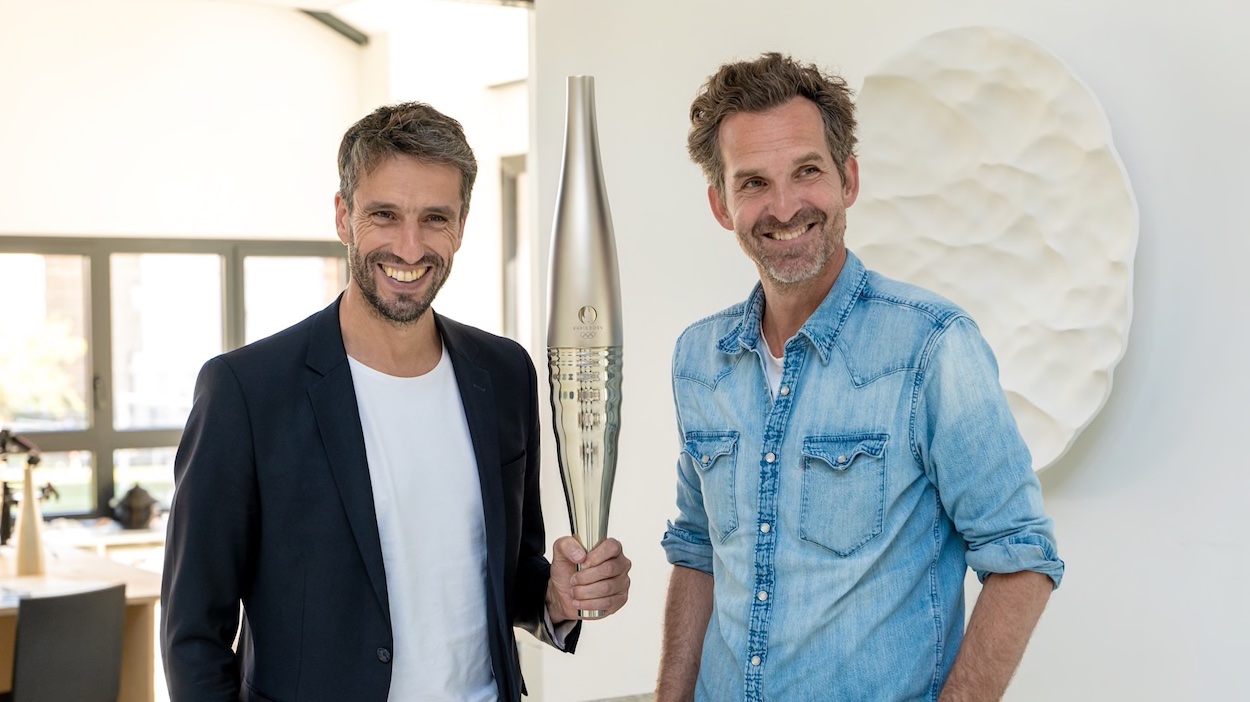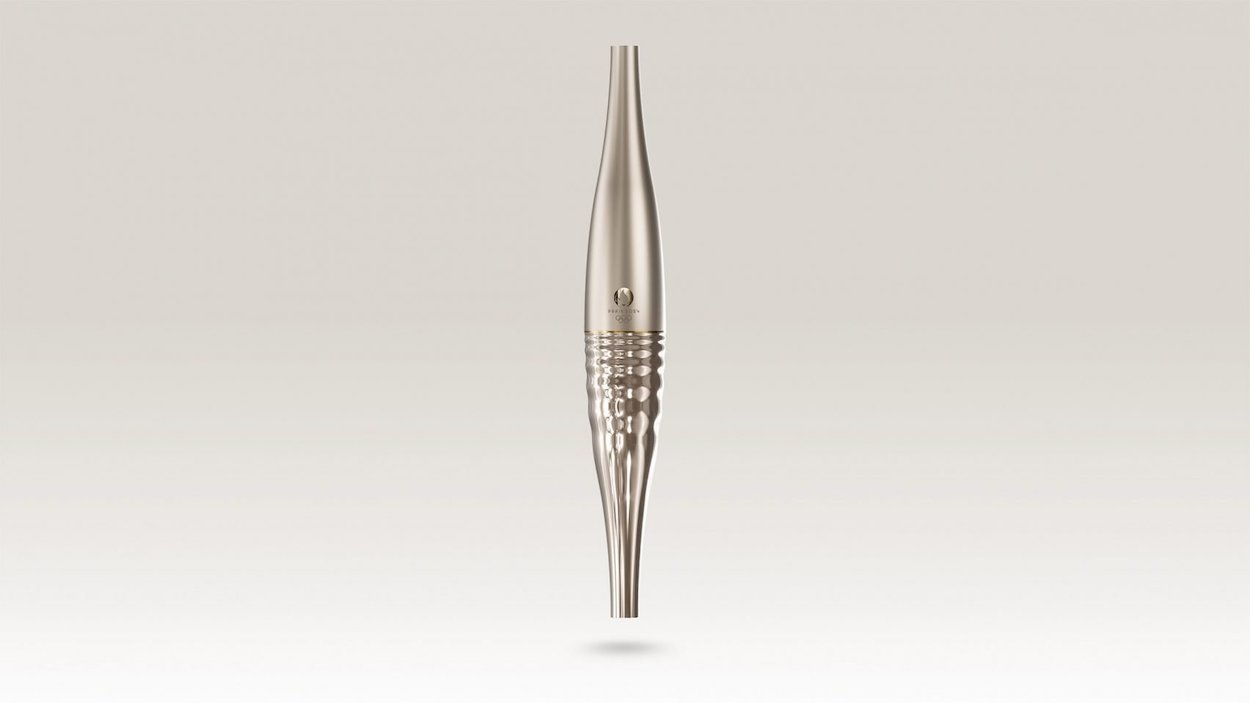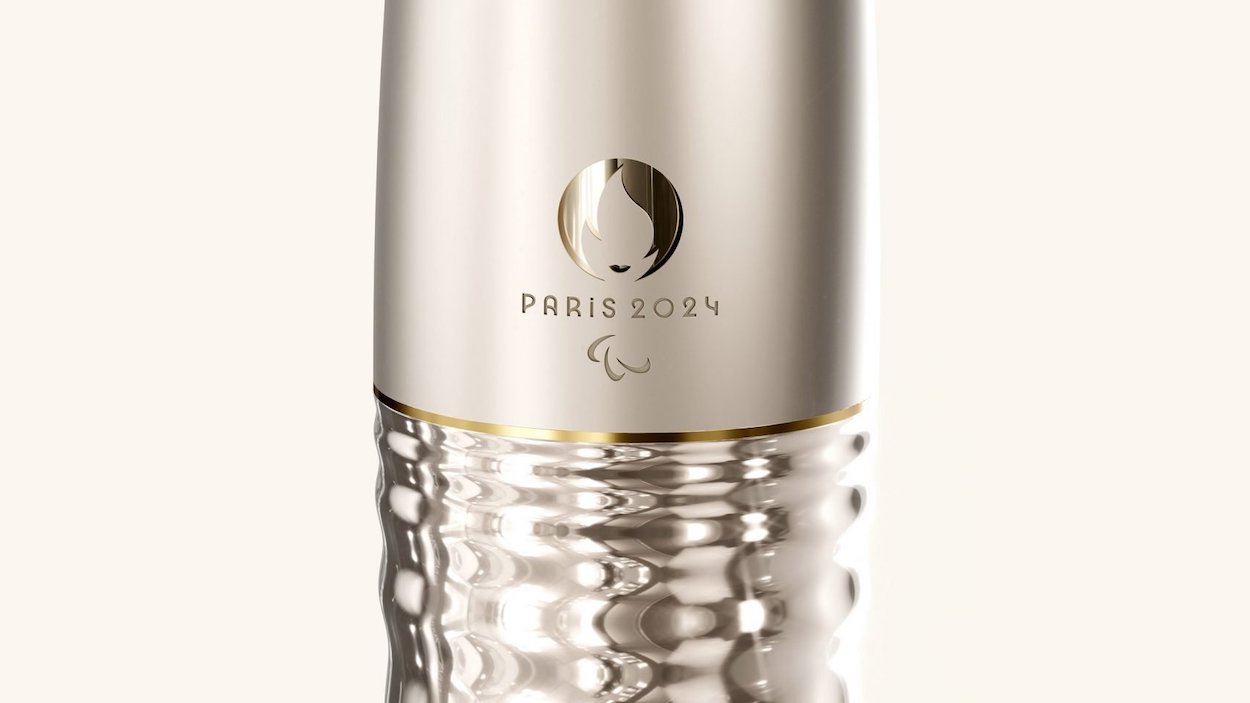Olympic torches often reflect the current narratives and sensibilities of their home city. Cherry blossoms informed the 2020 Tokyo torch, which Tokujin Yoshioka envisioned as a symbol of rebirth following 2011’s Great East Japan Earthquake and tsunami. The 2000 Sydney Torch took cues from the Sydney Opera House’s haphazard forms; a German eagle was etched into the 1936 Berlin Torch in a cocky display of pre-war nationalism. So when Mathieu Lehanneur won the competition to design the torch for next year’s games in Paris, he wove in nods to sustainability, peace, and equality, themes affecting his hometown and the games at large.
They coalesce in a champagne-hued steel torch imbued with Lehanneur’s signature whimsy and tempered with an elemental rigor. What appears to be two mirrored bottles—one smooth and matte, the other rippling and reflective—fused together at their bottom is a poignant statement on equality. The Paris Games marks the first in history to feature an equal number of male and female participants, as well as the first time the Olympics and Paralympics share the same torch design. The lower half nods to the River Seine; peace manifests via soft curves. “It plays on perfect symmetry, speaking to us more clearly about equality,” Lehanneur says. “I wanted it to be pure, iconic, almost elemental.”



